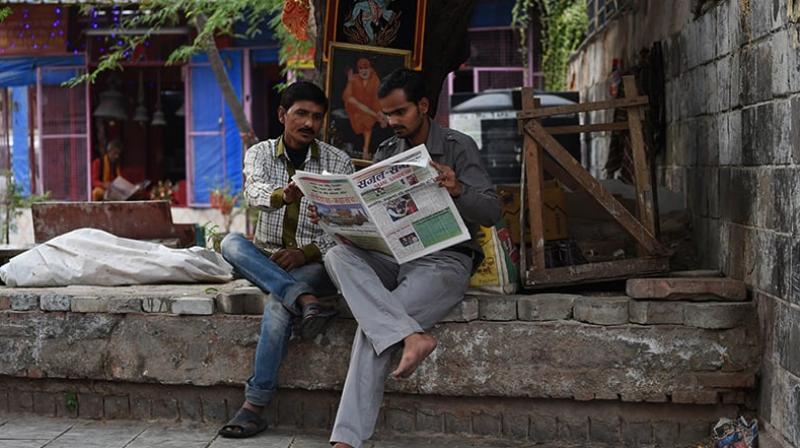Young people prefer newspapers to online when it comes to print: study

London: Despite fall in newspaper circulation and increase in news consumption via smartphones, young readers are spending nearly twice as much time with print editions than on websites and apps, according to a UK study.
In 2016, the 18- to 34-year-old British readers of eightUK national newspapers spent a total of 21.7 billion minutes reading the news brands' print editions, but just 11.9 billion minutes using their websites and apps.
The study, led by researchers at City, University of London, used a large-scale survey and online user measurement to investigate the total time spent with newspapers in print and online.
The results show that, despite falls in the circulation of newspapers and increases in news consumption via smartphones, readers of all ages still spend more time with newspapers' "dead-tree" editions than with their websites and apps.
"For younger readers, like for middle-aged and older consumers, newspapers' print editions provide an experience they invest time in, compared to how they snack on and scan news online," said Professor Neil Thurman of the Department of Journalism at City.
The study shows that newspapers' 18- to 34-year-old print readers spend an average of 23 minutes reading each weekday print issue (and more on Saturdays and Sundays).
However, those same newspapers' 18- to 34-year-old online readers visit the brands websites and apps for an average of less than one minute per day (43 seconds).
Although most newspapers are attracting more attention from younger readers via their print editions than via their online channels, the young are spending less time with newspaper brands than they used to, even though digital distribution has made access easier and cheaper.
The report compared the time spent with newspapers in 2016 against the time spent at the turn of the millennium.
Overall there has been a 40 per cent drop, with much larger falls in the attention coming from younger ( 64 per cent) and middle-aged ( 57 per cent) readers than from the older (14 per cent) audience segment.

